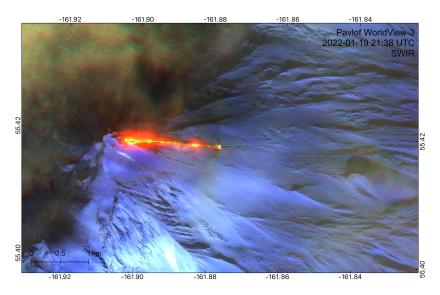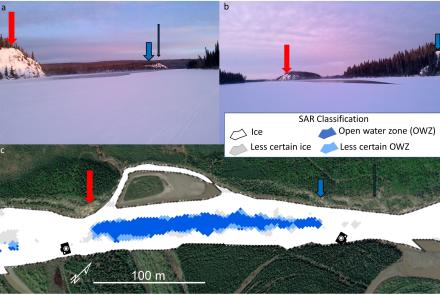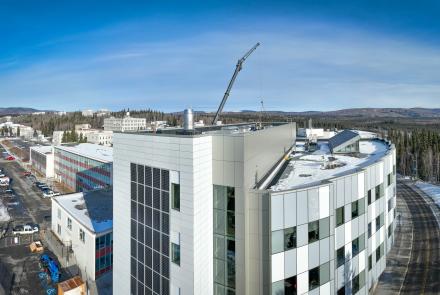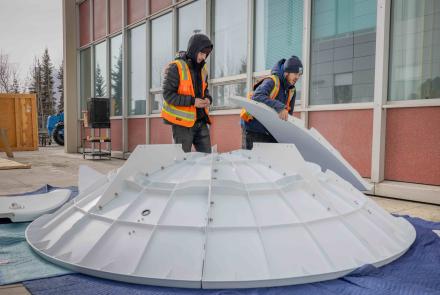
Scientists plan study of northern cities’ air quality
Atmospheric scientists at the University of Alaska Fairbanks have launched an effort to better understand urban air quality problems in northern cities. During the next few years, Bill Simpson and Jingqiu Mao of UAF’s Geophysical Institute hope to join international researchers on a large-scale field study to understand the chemistry behind air pollutants in Arctic and sub-Arctic cities. Fairbanks, Alaska, has the worst year-round air quality out of 187 U.S. cities, according to a 2018 report from the American Lung Association. The ranking is mainly due to particulate matter smaller than 2.5 microns across, roughly one-thirtieth the width of a human hair. Simpson and his colleagues want to know where these tiny particles come from and how cold and dark conditions affect them. As the seasons change and Fairbanks gets less sun, the air near the ground cools and forms a separate layer from the warmer air higher in the atmosphere. This is called an inversion. During strong inversions from November through January, the air at an elevation of 100 meters above Fairbanks is 14.4 degrees to 18 degrees Fahrenheit warmer than the air at ground level, a 2010 study found. Much like oil floats on water, the lighter, warm air floats on top of the heavier, cold air. Unless the air gets stirred by a strong wind, they don’t mix. This traps surface-emitted pollutants in the lower layer. A 2012 study estimated that wood smoke accounts for 63 percent of PM 2.5 in Fairbanks and 80 percent in North Pole. Different studies give slightly different percentages, Simpson said, but wood smoke seems to be a significant contributor to the air pollution. “Knowing that we’re going to be bringing state-of-the-art measurements to this, I think we can be a bit more definitive than prior studies,” he said. Simpson and his colleagues hope to gather some data with unmanned aerial vehicles, in partnership with the Alaska Center for Unmanned Aircraft Systems Integration at UAF. The aircraft would carry sensors vertically from the ground up through the inversion layer. Piloted aircraft can’t fly close to the ground near populated areas, but small drones could. Many people stand to benefit from this research, Simpson said. The Arctic is home to about 4 million people, according to the National Snow and Ice Data Center. “The problems we have here in Fairbanks are common to other places around the Arctic,” Simpson said. “Using a lot of wood as a heat source is common through Scandinavia and Russia. Having strong inversions is common in northern cities.” Researchers from around the world met in Fairbanks May 14 and 15 to come up with a plan to learn more about northern air pollution. The 44 researchers, including 11 from other countries, participated in a workshop as part of the Alaska Pollution and Chemical Analysis project, or ALPACA. After coming up with a plan for what to study, the researchers will need to find funding. “I’d like to see this project hear citizen concerns, hear public concerns and design the strategy to try and increase understanding of the public on the problem. So [it needs to] also have an outreach aspect to it,” Simpson said. “In the long run, I hope that the project will help people understand the problem better, because I think part of the solution is going to be people deciding to do the right thing on burn-ban days.”
Sue Mitchell, 907-474-5823, sue.mitchell@alaska.edu
Bill Simpson, wrsimpson@alaska.edu
Jingqiu Mao, jmao2@alaska.edu






